¿Comprar unos auriculares VR? Comparación de Apple Vision Pro y Meta Quest 3

Con más jugadores en el ruedo, el mundo de los cascos de realidad virtual y mixta es más emocionante que nunca. Apple ha entrado en la arena con su Apple Vision Pro premium, mientras que Meta sigue perfeccionando su asequible línea Meta Quest. Pero, ¿cuál es el adecuado para ti? Aquí tienes una comparación en profundidad de las principales similitudes y diferencias.
Diseño
El Apple Vision Pro presenta una elegante visera curvada con carcasa de aluminio anodizado y exterior de cristal laminado. Tiene un dial de corona digital para alternar entre los modos inmersivo (RV) y de realidad mixta. Con materiales premium y detalles de diseño intrincados, encaja con la estética típicamente de alta gama de Apple.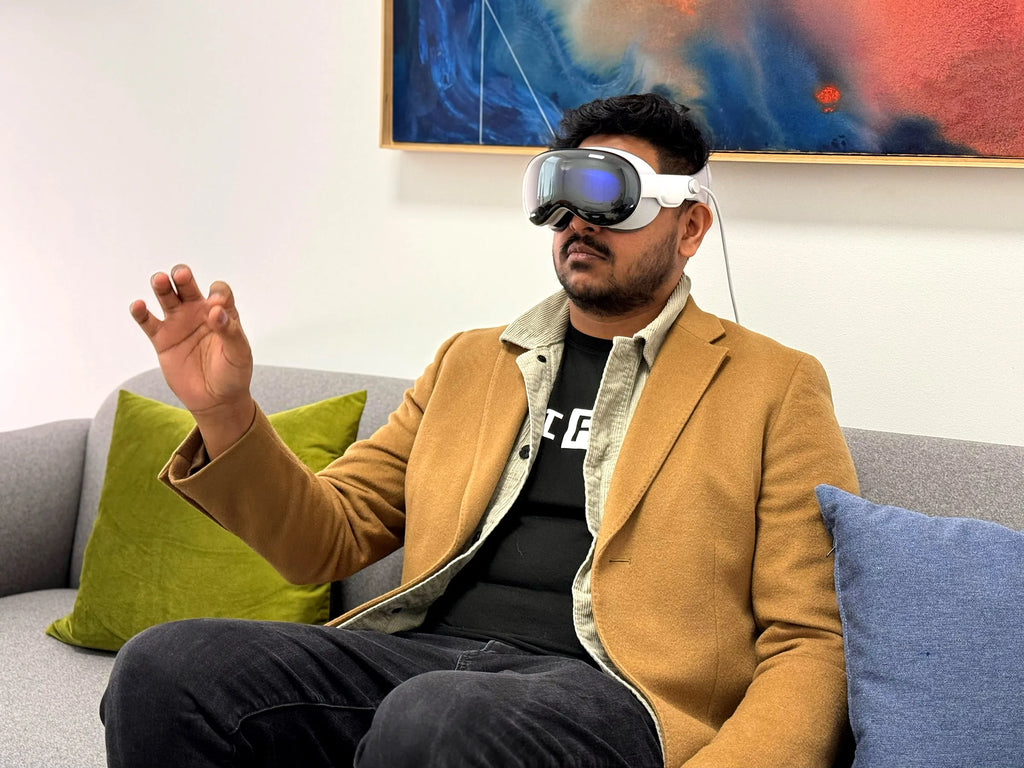
El Meta Quest 3 utiliza un cuerpo de plástico blanco con una diadema en forma de Y de tela por defecto y espaciadores en la parte trasera. Aunque es más funcional que elegante en apariencia, el Quest 3 es más ligero y está más diseñado para el movimiento y la actividad.
Calidad y Capacidades de la Pantalla
Apple ha equipado su Vision Pro con pantallas micro-OLED de última generación con aproximadamente 3660 x 3142 píxeles por ojo. Esa es una resolución extremadamente alta que supera la calidad 4K. Los cascos también admiten frecuencias de actualización de hasta 100Hz para una visualización fluida y cómoda.
Pero Apple va más allá de la resolución. El Vision Pro utiliza tecnologías sofisticadas como el enfoque variable, el mapeo espacial y los ajustes automáticos EyeSight (explicados más adelante) para permitir la máxima precisión visual y comodidad, especialmente en los modos de realidad mixta.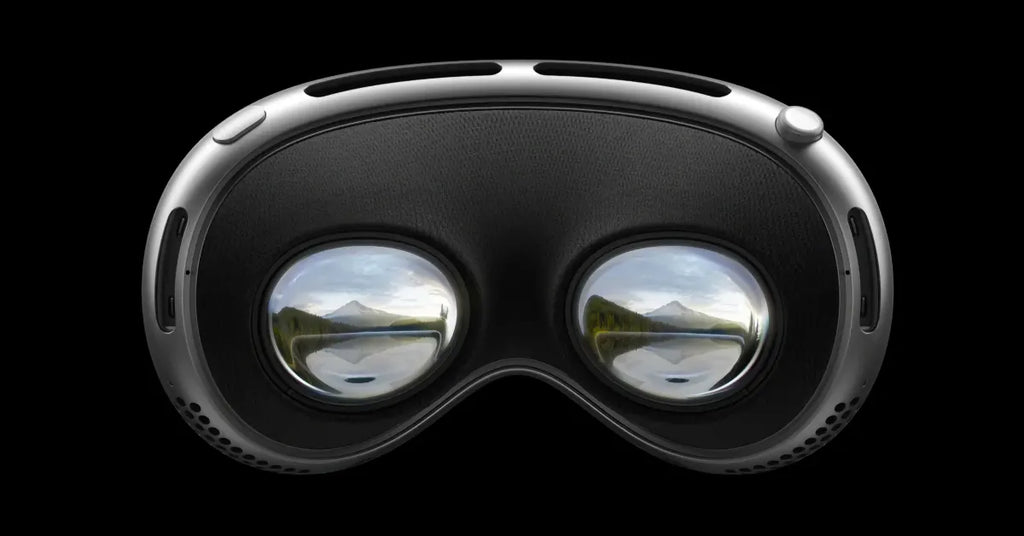
El enfoque variable significa que las lentes pueden cambiar de una imagen nítida a una borrosa, al igual que el ojo humano. Esto da una sensación de profundidad más real al ver objetos cercanos y lejanos.
El mapeo espacial utiliza la matriz de cámaras externas para escanear y construir dinámicamente una malla 3D de su entorno. Esto permite que los objetos virtuales parezcan encajar e interactuar de manera más convincente dentro de los espacios reales de la habitación.
Finalmente, los ajustes automáticos EyeSight utilizan cámaras de seguimiento ocular para establecer automáticamente el mejor espaciado de las lentes y la configuración de la pantalla, personalizados por usuario en la configuración inicial.
En comparación, las pantallas del Meta Quest 3 ofrecen 2064 x 2208 píxeles por ojo en paneles LCD con una frecuencia de actualización máxima de 120Hz. Aunque bastante nítida, la tecnología LCD muestra algo de sangrado de luz y no reproduce los negros profundos tan bien como la alternativa micro-OLED.
No obstante, las tasas de fotogramas suaves también contribuyen a la comodidad en sesiones largas de RV. Meta mejora aún más los gráficos mediante tecnologías como la renderización foveada fija que agudizan las imágenes en el centro de tu mirada mientras reducen la imagen periférica.
Si bien los gráficos y las pantallas del Quest 3 priorizan los juegos y el entretenimiento de RV sobre la productividad, aún brindan una ventana decente a la RV, especialmente a este precio accesible.
Rendimiento
El Apple Vision Pro incorpora una gran potencia de procesamiento a través del último chip M2 de Apple (también utilizado en los MacBooks) además de un procesador Apple Reality personalizado. Esto permite una integración perfecta dentro del ecosistema de Apple para un rendimiento fluido en aplicaciones, SO y experiencias.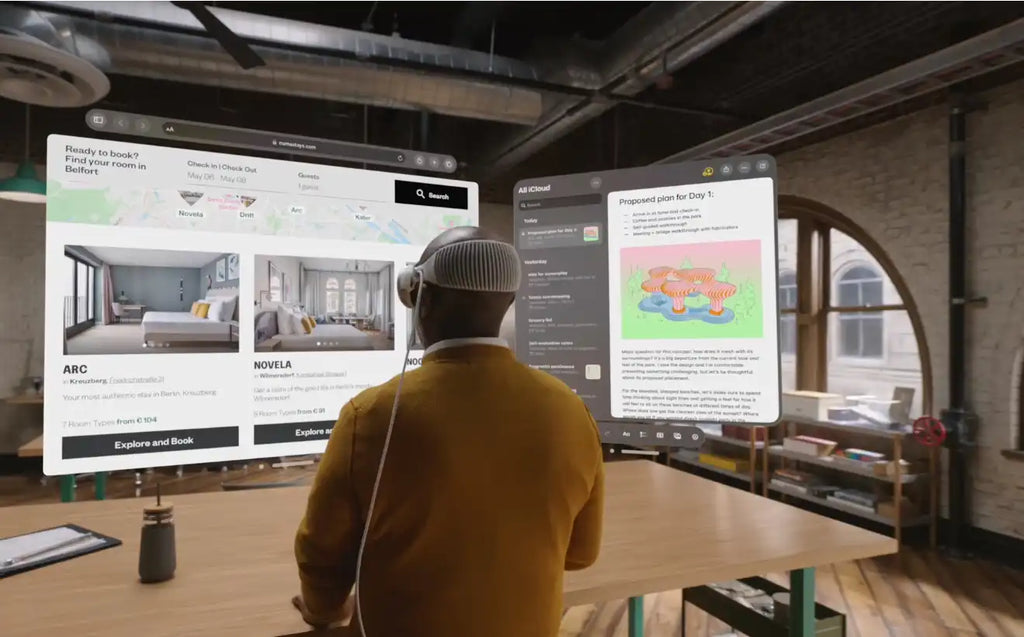
El Meta Quest 3 está equipado con un chip Snapdragon XR2 Gen 2 de última generación optimizado específicamente para la renderización de realidad virtual y mixta. Aunque no es tan robusto para la informática general, es extremadamente capaz de ofrecer paisajes y experiencias de realidad virtual expansivos y de carga rápida con una latencia mínima.
Duración de la batería
El Apple Vision Pro ofrece hasta 2 horas de uso general antes de necesitar recargarse. Sin embargo, depende de un paquete de batería externo que debe llevarse por separado. El dispositivo se puede usar todo el día cuando está conectado a una fuente de alimentación como una toma de corriente.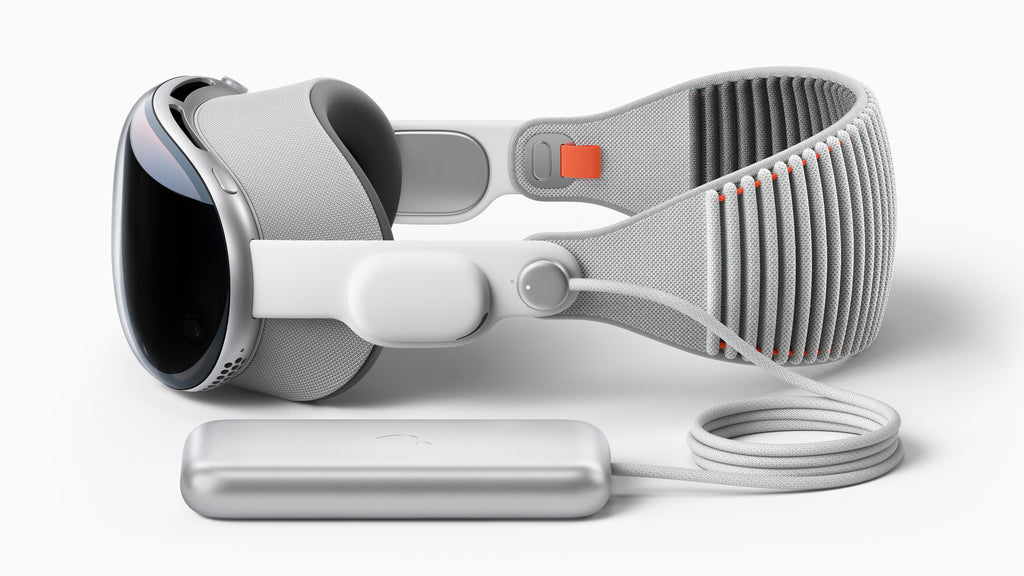
En contraste, el Meta Quest 3 incorpora la batería interna directamente en el propio casco para un uso verdaderamente sin ataduras. Ofrece aproximadamente de 2 a 3 horas de duración de la batería en promedio, ya sea que estés jugando, usando aplicaciones de productividad o viendo contenido multimedia. El Quest 3 también se puede enchufar directamente a una toma de corriente para un uso ilimitado, y existen muchos accesorios de correa de batería de terceros para el Quest.
Experiencia
Apple está comercializando el Vision Pro como un casco AR/VR multiuso, un todoterreno adecuado para el trabajo, los medios, los juegos ligeros y las aplicaciones visualmente ricas. Las experiencias únicas que combinan los mundos físico y virtual de nuevas formas tienen como objetivo diferenciarlo de la RV tradicional.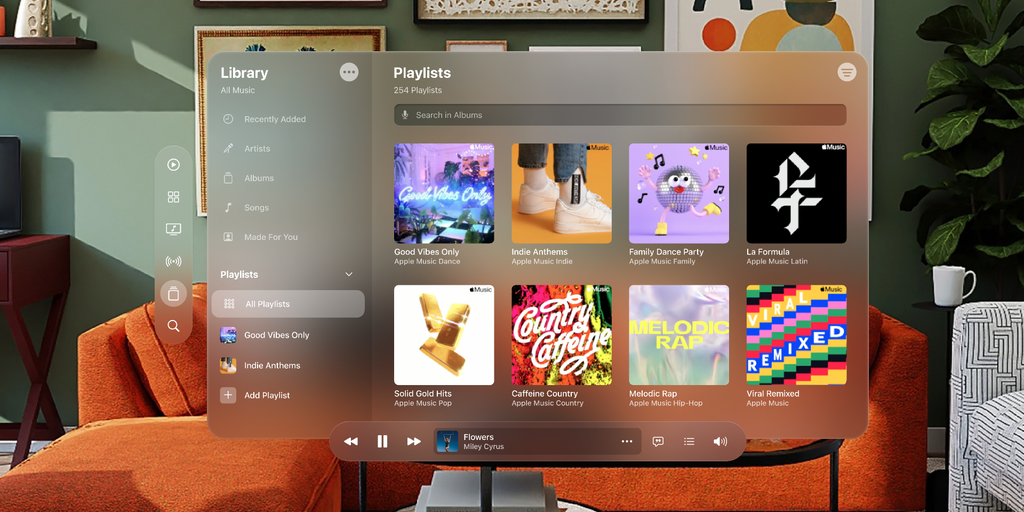
El Meta Quest 3 se centra principalmente en la mejor experiencia de juego de RV, la conexión social y las experiencias colaborativas impulsadas por la biblioteca de contenido de Oculus en constante expansión. Si bien es capaz de una productividad básica, el entretenimiento sigue siendo el principal atractivo.
¿Cuál es para ti?
Al final, todo se reduce a las preferencias personales y al presupuesto. El Apple Vision Pro, con un precio superior a los 3500 dólares, es ideal para los primeros adoptantes que desean un dispositivo premium con funcionalidad versátil, pantallas de primera categoría y un exterior elegante que puedan integrar en su vida diaria.
¿Con un presupuesto inferior a 500 dólares? El Meta Quest 3 te da acceso al ecosistema más grande de juegos y entretenimiento de RV. Puede animar tu rutina habitual con aventuras virtuales fuera de este mundo o ser tu compañero de entrenamiento. Por la mejor relación calidad-precio, no tiene rival.
Antes de dar el paso, pregúntate lo siguiente:
¿Para qué lo usarás principalmente?
Si es para jugar, el Meta Quest 3 y su biblioteca de contenido mucho más grande es probablemente la mejor opción. Para productividad y medios, el Vision Pro tiene la ventaja.
¿Cuánto importa la calidad de la pantalla?
El Apple Vision Pro presume de las mejores pantallas de su clase, mientras que el Quest 3 se queda ligeramente atrás en píxeles y en el uso de pantallas LCD frente a OLED.
¿Valoras más el uso móvil o la conectividad entre dispositivos?
El Quest 3 todo en uno y portátil no necesita estar conectado a nada. Pero el Vision Pro se empareja sin problemas con tus dispositivos Apple.
¿Tu vista es compatible con alguno de los cascos?
El Quest 3 es compatible con gafas, mientras que el Vision Pro requiere inserciones de lentes graduadas personalizadas. Sin embargo, aquellos que necesiten corrección visual pueden recurrir a soluciones como las inserciones de lentes de VR Wave para el Quest 3 y para el Apple Vision Pro. Ofrecen lentes graduadas hechas a medida que se adhieren magnéticamente a los cascos, con enfoque ajustable en lugar de fijo. También puedes añadir filtros de luz azul para protección ocular o recubrimientos antirreflejos. Para aquellos que ya usan gafas, las lentes adaptables de VR Wave son más cómodas y prácticas que intentar meter tus gafas existentes en los cascos. Ahora, tanto los propietarios de cascos Meta como Apple pueden disfrutar de vistas nítidas y sin obstáculos dentro de sus mundos virtuales.
¿Qué tan ajustado es tu presupuesto?
Puedes empezar en la RV de calidad por solo $500 con el Quest 3, mientras que el Vision Pro exige un precio premium de $3500 que refleja su diseño de lujo.
¿Piensas usarlo para hacer ejercicio?
El Quest 3 es ideal para juegos de RV activos y entrenamientos. Las preocupaciones por el sobrecalentamiento pueden limitar los usos de fitness para el Vision Pro.
---
Cuando se trata de comprar uno de estos cascos avanzados, céntrate en tus prioridades clave. Aquellos que deseen las experiencias de mayor fidelidad con un diseño premium deben optar por el Apple Vision Pro. Sus capacidades técnicas van mucho más allá de los juegos, adentrándose en los medios, la productividad y más, aunque a un precio de lujo.
Por otro lado, los entusiastas de los juegos y el entretenimiento de RV no necesitan gastar mucho en el Vision Pro. El Quest 3 proporciona un excelente acceso a nuevos mundos a solo una fracción del costo. También obtienes pantallas y un rendimiento sólidos.
Por supuesto, estos productos solo arañan la superficie de lo que la realidad virtual y mixta interactivas podrían llegar a ser. Pero ofrecen a los consumidores una opción que se adapta a diferentes preferencias. Una cosa es segura: la computación espacial marca un cambio monumental en cómo podemos crear, socializar y consumir información en el futuro. Tanto el Vision Pro como el Quest 3 ofrecen un emocionante punto de entrada a esas posibilidades hoy.


